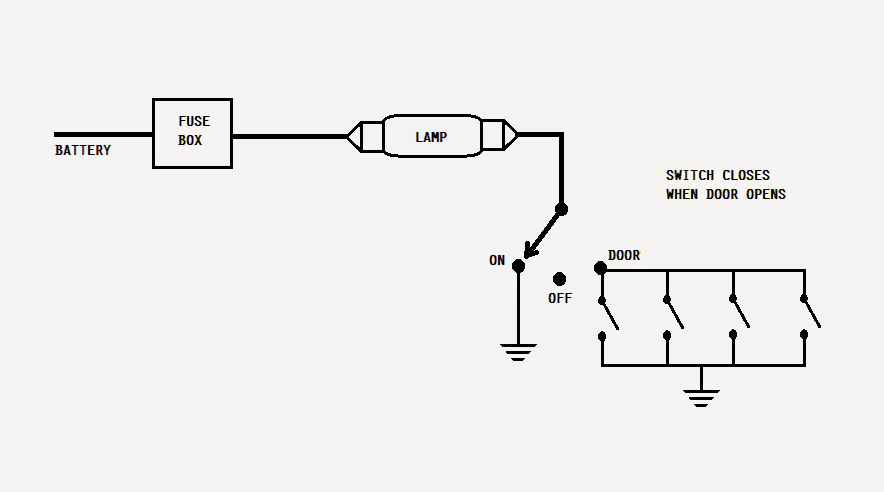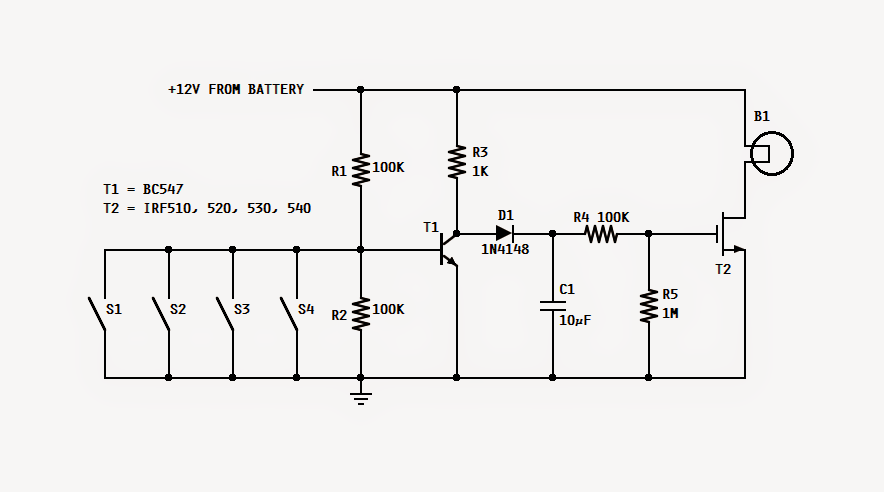The submit clarifies a very simple circuit widely available for developing a slow fading light impact at any time it's shut OFF. The application might possibly be generally applied in car interior lights.
Nearly all of the advanced cars are designed with circuitry which switches on the Car's room lamp when a door is opened and switches off the lamp in fading way when the door is closed.
Right here a very simple circuit is introduced which may be fitted in old cars having no major changes to acquire the same consequence.
Before we realize the information of the circuit, it is advisable to figure out the wiring of a Car's interior lamp and how the door switches are functioned.

The lamp is hooked up to the battery's positive by way of a fuse. The other end of the lamp is linked to a single-pole-3-throw switch.
When finally this switch is situated at ON, the other end of the lamp gets plugged into ground i.e. the negative terminal of the battery for this reason, the lamp gets activated.
In OFF place, the lamp continues to be shut off from the ground. In DOOR position, the lamp gets joined to the ground by means of door switches (in parallel). When a door is opened, the respective door switch is closed.

Making reference to the recommended car interior light fader circuit, when any of the door is opened, its switch is closed for this reason, the base of T1 gets linked with ground as well as stop executing. In this particular state, C1 gets charged swiftly with the aid of R3 and D1.
Immediately after C1 is charged, the mosfet is fed with the gate voltage thru R4 and thus it commences executing and consequently the lamp is activated.
Currently, when that door is closed, its switch gets open. The base of T1 gets turned off from the ground which is held at a voltage supplied by the R1/R2 voltage divider.
This action switches on T1, and the voltage that come from R3 confirms it way to ground thru emitter of T1.
The activating of T1 deprives C1 of its charging current and thus C1 starts off discharging steadily thru R4 and R5. The gate voltage of T2 lessens as C1 produces.
With this particular decline in the gate voltage the power of the lamp is also lowered. Lastly, when the gate voltage goes below the threshold voltage the lamp switches off.
The values of R5 and C1 should take care of the fading delay time of the lamp. Increasing the values increases the precious time and vice versa.
T2 should be any suited N-channel mosfet suitable for controlling no less than 50V and 10A. The complete circuit is generally constructed on compact sized general purpose board and enclosed in the room lamp cover.
Leave a Reply